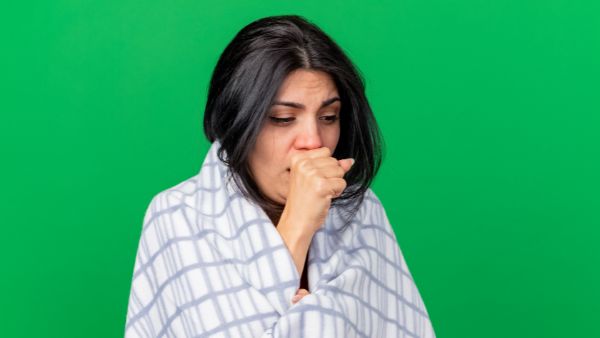
What Is Rat Fever?
Rat-bite fever (RBF), or rat fever, is an infectious disease caused by two different bacteria, namely Spirillum minus, commonly found in Asia and Streptobacillus moniliformis in North America (Streptobacillary RBF) [3].
In most cases, people are infected with these bacteria after contacting rodents that carry the bacteria. Alternatively, a person may become infected by eating food or drinking water that has been contaminated with rodent urine or droppings. The condition is known as Haverhill fever. A failure to treat RBF may result in serious or fatal consequences [4].
What Causes Rat Fever?
Generally, there are two types of RBF. North American streptobacillary RBF is the most common type caused by infection with Streptococcus moniliformis. The other type of RBF is spirillary RBF or sodoku. The disease is caused by S. minus bacteria and is the most common type in Asia.
RBF occurs when one of these bacteria enters the body through an open wound or mucous membranes in the eyes, nose, or mouth.
Bacteria that cause RBF are transmitted to humans by the following [5]:
- The bite or scratch of an infected rodent
- Infected rodent saliva, urine, or faeces
- contact with contaminated surfaces
- The consumption of contaminated foods or beverages

What Are The Symptoms Of Rat Fever?
If RBF is not diagnosed and treated early, it can lead to severe disease and death. Contact with rodents can also cause several other illnesses.
In its early stages, rat fever of RBF may exhibit similar symptoms to other medical conditions. However, Streptobacillary and spirillary RBF (sodoku) often present different symptoms.
Symptoms of streptobacillary RBF include [6]:
- Fever
- Vomiting
- Headache
- Muscle pain
- Joint pain or swelling
- Rash (occurs in about 3 out of 4 people with RBF)
- An intermittent fever
- Swollen lymph nodes
- Rash
- Swelling or sores near the wound
Symptoms of spirillary rat bite fever (sodoku) typically appear 7 to 21 days after exposure to the bacteria. A bite or scratch may appear to have changed over time. The following symptoms may also be present [7]:

Who Is At Risk For Rat Fever?
The most significant risk factor for rat-bite fever is exposure to rats or other rodents. A person cannot contract rat bite fever from another person. Infected animals are the only source of infection.
READ RELATED: What Could Happen to Your Body If You Sit Too Much
The following individuals are at the greatest risk of contracting rat bite fever [8]:
- People who keep pet rats or other rodents in their homes.
- Individuals who work in research laboratories or pet stores where rats or other rodents are present.
- People live in an area with a significant population of wild rats or mice.
- Older adults.
- Pregnant women.
- People with weakened immune systems.
- There is a higher risk of rat bite fever among children around rodents. They are still in the process of developing their immune systems. They may be less capable of fighting off the illness.
- Abdominal abscesses (pockets of infected fluid).
- Liver and kidney infections (hepatitis and nephritis).
- Infections involving the lung (pneumonia).
- The infection of the brain and nervous system (meningitis).
- Heart infections (endocarditis, myocarditis, or pericarditis).
- An estimated 1 in 10 death rates is associated with streptobacillary RBF infection.
What Are The Complications Of Rat Fever?

How Is Rat Fever Treated?
Rat bite fever must be detected early and treated promptly. If left untreated, it can result in death.
In most cases, antibiotics are very effective at curing the illness. However, if you are exposed to the virus, you must speak with your doctor as soon as possible to receive prompt treatment [9].
If you have been bitten or scratched by a rodent, clean the wound with soap and water. Inform your doctor that you have been scratched or bitten by a rodent. If you experience any symptoms of rat bite fever, your physician will advise you on when to begin treatment.
You should consult your doctor if you have questions about your rat-bite fever risk.
Prevention Tips For Rat Fever
Reducing your risk of contracting RBF and other rodent diseases is possible by avoiding direct contact with rodents, places with rodent infestations, and other areas where rodents may exist [10].
When handling rats in a pet store, wear protective gear, such as gloves. After handling rodents, avoid touching your mouth and face. You should wash your hands with soap and warm water for at least 20 seconds after handling rodents, their cages, bedding, urine, or droppings.
Wear proper protective laboratory gear, including gloves, when handling rats in a laboratory or animal research setting. After handling rodents, avoid touching your mouth and face. After handling rodents, their cages, bedding, urine, or droppings, wash your hands with soap and warm water for at least 20 seconds.

On A Final Note…
RBF is a serious infection caused by the S. moniliformis and S. minus bacteria. Humans are exposed to these bacteria through rat bites and contaminated food and beverages. In most cases, RBF is accompanied by nonspecific symptoms, such as fever, joint pain, and nausea.
Without treatment, RBF may lead to severe complications such as endocarditis and inflammation of the heart membrane.
Source:








